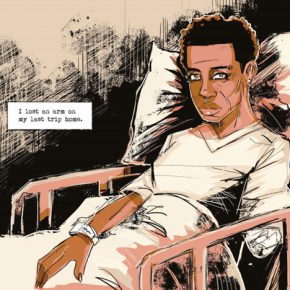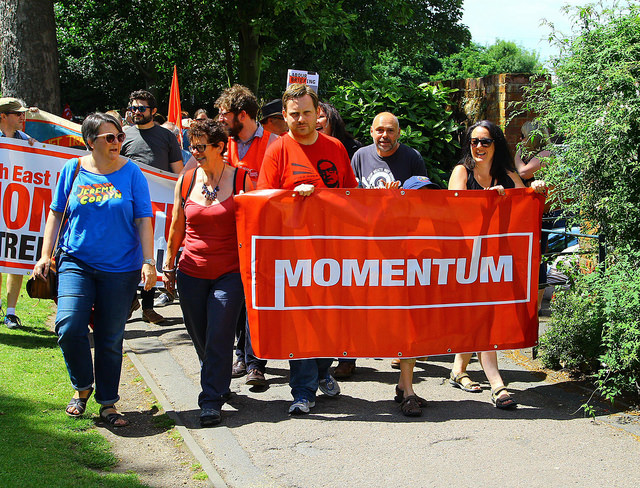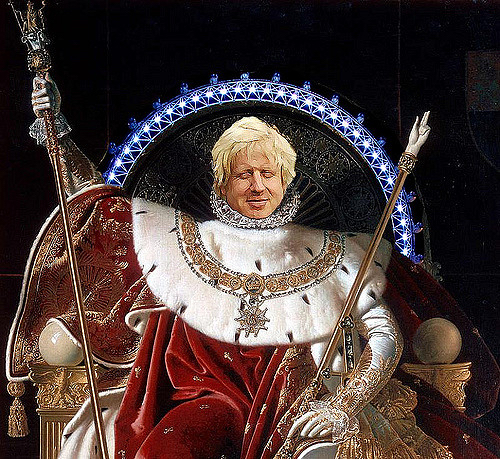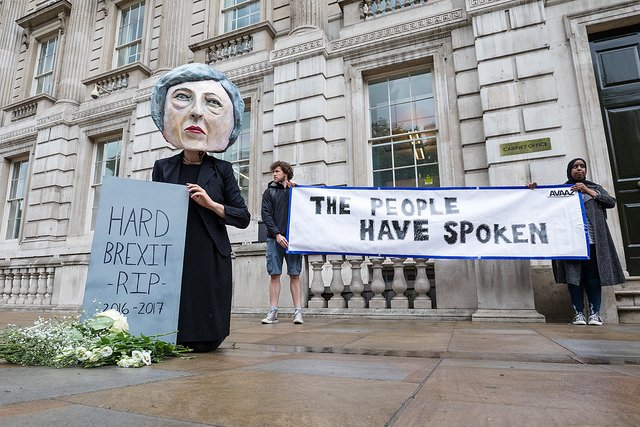The pace of British politics has yet to slow down. Every week we face a new outrage or a fresh atrocity, but the show must go on. Theresa May is still clinging on to power by her fingernails. At any moment the prime minister could fall into the abyss of political failures.
The Conservative government has just signed a deal with the Democratic Unionist Party (DUP) pledging over £1 billion for Northern Ireland. This deal provoked an immediate backlash with the usually servile right-wing press going after May for throwing money at the Six Counties. But these are short term considerations.
It’s clear what Theresa May can look forward to in the next 18 months: resignation or electoral defeat. May is kept in office by the fact that there is no other Tory who would want to be in her position. Otherwise the backbenchers would probably string her up from a lamppost. DUP leader Arlene Foster knows this full well and has decided to get what she can now rather than later.
The outrage over the deal with Northern Ireland is similar to the kind of scornful remarks you hear about benefit claimants owning a smart phone. The truth is the whole of the UK needs greater public investment based on need, and if austerity were to end across the country there might be less spite to go around. But the DUP deal wasn’t the only big news to hit the UK this week.
Scotland’s First Minister Nicola Sturgeon has had to put aside her plans for a second referendum on independence. This is after the election results saw the resurgence of Scottish Conservatives. If the hung Parliament was the main shock of the election, the re-emergence of tartan-clad Tories was a second surprise. It seemed to fly in the face of how we have come to understand Scottish politics.
England is meant to be Tory town, and yet Scottish Conservative leader Ruth Davidson claimed the scalps of nationalist giants Alex Salmond and Angus Robertson. The Scottish results were a shock, as England moved away from Tory rule, Scotland seemed to embrace it. However, there is much more to this political shift than meets the eye.
Another common reading is that the SNP played its best card too soon. After the incredible victory of 2015, the SNP fell victim to hubris as so many parties have done in the past. Feeling invincible with an almost total majority, Nicola Sturgeon held a vote for a second independence referendum. But she actually startled Scottish voters to go Tory.
As a result, Sturgeon had to back away from her call for a second vote. Even though the Scottish Nationalists have the majority in Scotland and easily won the vote for another referendum, the SNP has lost over twenty seats in one sitting. Now the SNP leadership realises its position is much more vulnerable than it first appeared.
At the same time, Ruth Davidson has reinvented the Scottish Conservatives as a modern liberal unionist party with less to do with anti-Catholic hatred than ever before. The processes of secularisation and devolution have both aided the resurgence of Toryism in Scotland. The first has helped to tone down the importance of Protestant reaction, whereas the second opened up a steam-valve on demands for autonomy.
Fatigue was another key factor. Scottish voters are exhausted, just like British voters. This is the reason why the British public mostly opposes calls for a second referendum on Brexit. The same is likely true in Scotland. People were shaken by the destabilising effect of the referendum. Some people were exhilarated, others petrified.
It appears that the number of Scottish unionists turned towards independence by Brexit was perhaps matched by the number of voters passing them in the opposite direction. If the UK leaving the European Union meant instability, the immediate raft to cling onto in these turbulent waters is itself the United Kingdom.
Unsurprisingly, Davidson’s pitch to the Scottish people is to maintain the status quo, but the status quo is now the devolved parliament established by New Labour. Instead of putting forward the case for the Union, Davidson just asks Sturgeon to “give us peace”. This is the essence of the Tory agenda in Scotland: anti-politics. She offers an end to difficult choices and ultimately to politics.
The problem may be that the SNP failed to offer an alternative to the stale politics of Holyrood. If the Sturgeon government had put up greater resistance to austerity, they might not be suffering the consequences of their own hubris on independence. Instead the Scottish Nationalists were left playing administrators of the austerity regime.
This is why Scottish Labour won back six seats out of the 40 they lost to the SNP in 2015. The Scottish Labour vote rebound to 27% putting it in third place to the Conservatives at 29% and the SNP at 37%. Jeremy Corbyn’s Labour Party has more promise for working class voters than the SNP. Though there is still a long way to go, Corbyn is reclaiming the optimism vote.
https://www.youtube.com/watch?v=1SUKOsGRQkU
Photograph courtesy of Matt Brown. Published under a Creative Commons license.





